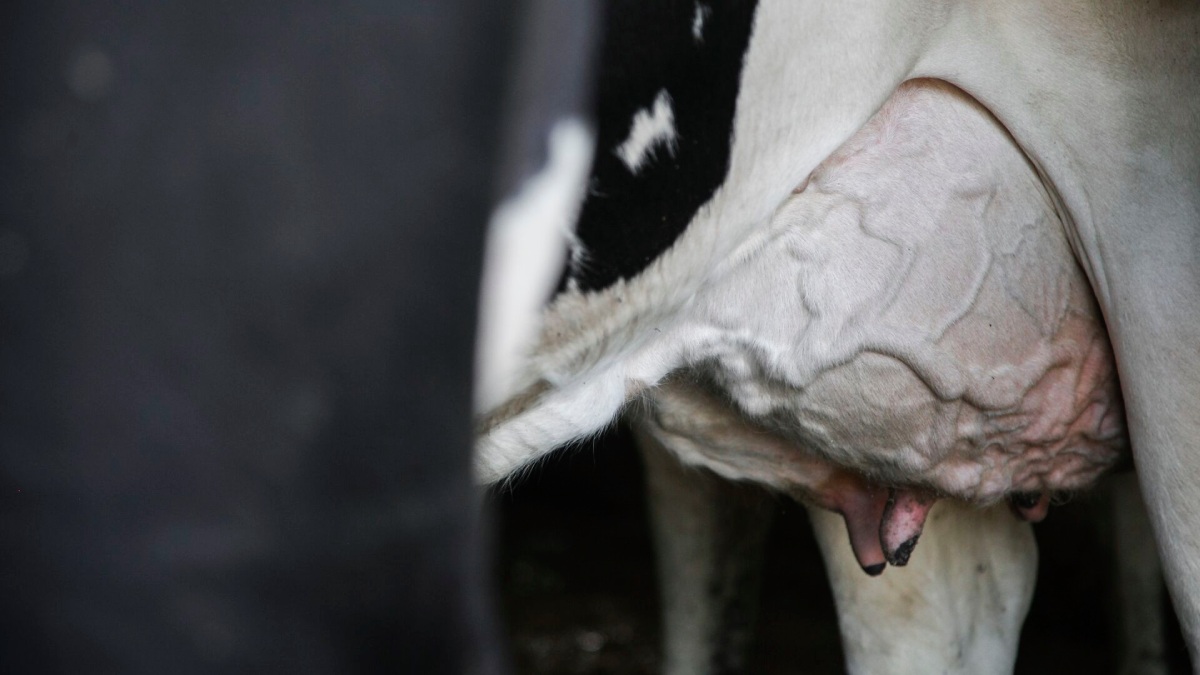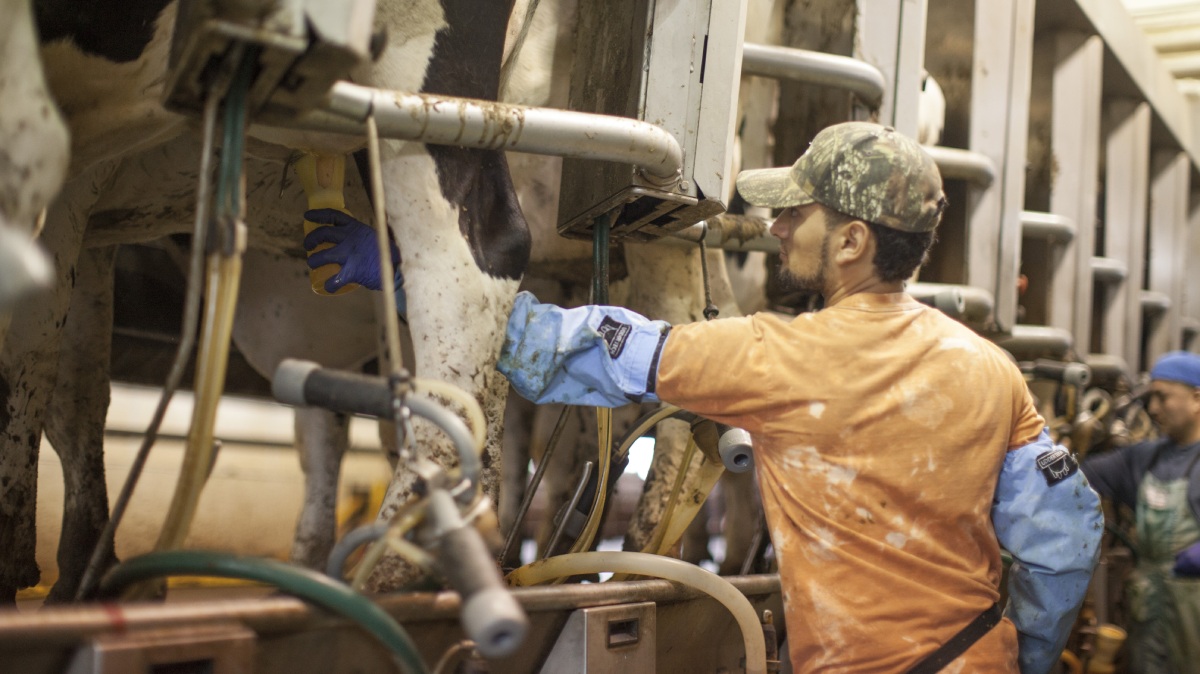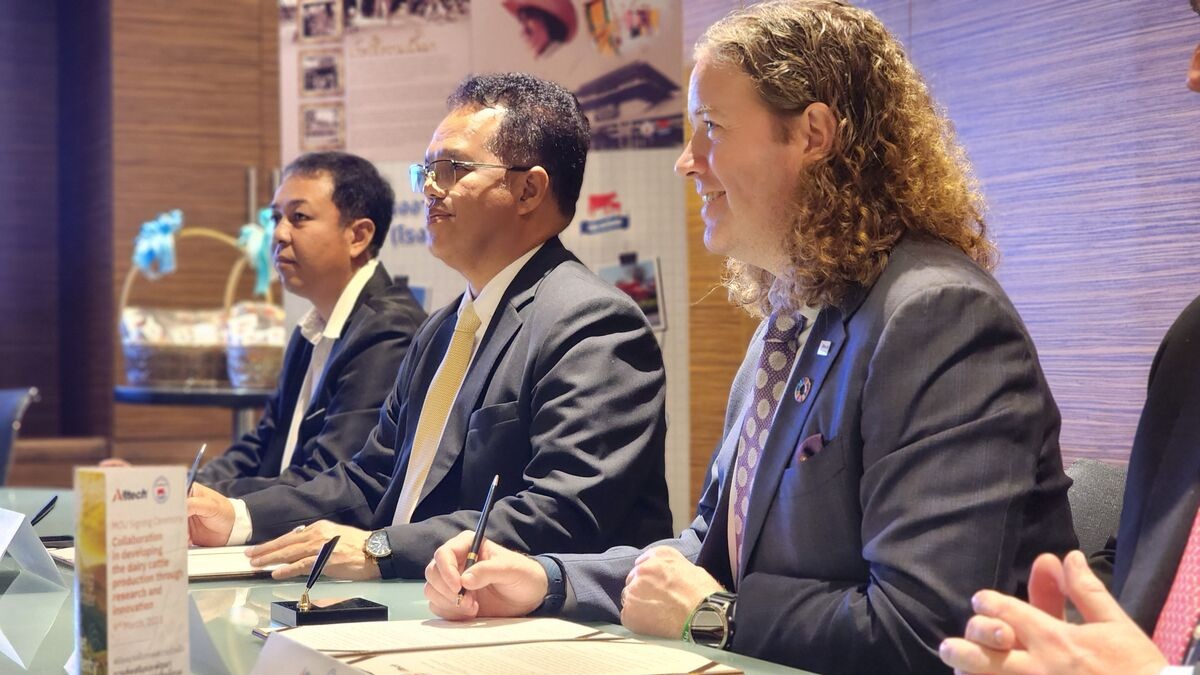The beef industry is constantly evolving, with new technologies and practices emerging to help producers improve their efficiency and profitability. Mike De Groot, a founding partner and director of TD Beef, joins the Ag Future podcast to discuss the growing trend of dairy composites and how TD Beef is bridging the gap between the dairy and beef industries through its beef-on-dairy supply chain, which tracks cattle and data from conception to consumption.
The following is an edited transcript of the Ag Future podcast episode with Mike De Groot hosted by Tom Martin. Click below to hear the full audio or listen to the episode on Apple Podcasts, Spotify or Google Podcasts.
Tom: Welcome to Ag Future, presented by Alltech. Join us from the 2022 Alltech ONE Conference as we explore our opportunities within agri-food, business and beyond.
I'm Tom Martin with the Alltech Ag Future podcast series, and with us is Mike De Groot, founding partner and director of TD Beef, an ESG-friendly cattle procurement company positioned to bridge the gap between the dairy and beef industries. TD operates a beef-on-dairy supply chain that tracks cattle and data from conception to consumption. De Groot and his partners, Jake and Jason Tuls, raise cattle on the Tuls family’s ranches in Eastern New Mexico and West Texas. Thanks for joining us, Mike.
Mike: Thanks for having me.
Tom: Mike, you have a very collaborative philosophy about working to make sure that everybody in the supply chain profits. Tell us about that supply chain. Who is in it?
Mike: Thanks, Tom. In its most basic form, what TD Beef is trying to do is make better beef faster. Everything starts with the selection of the genetics, and then, at conception — but that doesn't necessarily mean that they just move down the supply chain and become great beef at the end. There are a lot of partners, and every one of those partners has a responsibility for the genetic expression of the semen that we're using. For example, it starts at conception with the dairymen. That calf, when it's born, will move through a calf ranch, which is where my partners are and (where) all of the TD cattle are housed. From there, they go to a feedlot (and) from the feedlot to the packer and then, eventually, to your plate.
Tom: In your promotional materials, you tell us that your company creates black cattle that offer green solutions. Tell us what that means.
Mike: Yeah. That's fun, and that's a developing space right now. I'm not a scientist, and that's going to be very clear, but I love systems. I'm a dairy kid, and so, systems are what make us (in the dairy industry) function at high levels of efficiency. What I know is (that) the carbon created follows the mother and the milk. Therefore, the calf that comes out, the black calf that comes out, is carbon-neutral. In some cases, a story can be told that it might be carbon-negative if it's produced off of dairies that are capturing methane in the form of methane digesters.
We know, from that level — we’re obviously reducing our carbon footprint, and there are some offsets there that people can be participating in. However, something more specific is how quickly our cattle convert and perform because of the genetics that we're using. For example, our cattle get to 350 pounds 18 days earlier than their generic counterparts. Now, a Holstein steer could not even get to 300 pounds in the same time that our TD beef are getting to 350. So, you can imagine — what we're looking at there, from a data standpoint, is how many days on feed less are we (achieving) by feeding TD beef as compared to feeding Holstein steers.
Tom: Mike, I watched a promotional video that featured a client talking about the hardiness of TD black bulls. What distinguishes TD bulls?
Mike: When beef-on-dairy originally started, the only criteria was that they needed to have a black hide. That was the only selection criteria. Now, a black hide is not necessarily conducive to performance or value down the supply chain. And because we have the ability to select genetics with specific traits that favor everyone throughout the supply chain, it's easy for us to create cattle that are uniform. To that gentleman's point (in the promotional video), all of our bulls meet certain requirements that favor a feedlot and a packer. Therefore, when the babies are produced and they're on the ground, they're noticeably different than their generic counterparts.
Tom: Dairy composites are a growing market in the beef industry. What are dairy composites, and how did this concept get its start? How did it find its way into the beef world?
Mike: In 2015, sorted semen made its way to the market in a major way, and dairymen adopted that technology. What it allowed them to do was create as many heifers as they needed from the animals that they desire to create them from. So, there was this strategic approach in their breeding program: create heifers from the superior animals that could help you, and then you're still left with other animals that needed to get pregnant. But it made no sense to use conventional semen because, if it were female, then, of course, it would go into the lactating herd. If it were male, then a Holstein steer is not as ideal as a beef steer. In fact, there's almost a $130–150 difference between the two. So, a dairyman, he doesn't need a calculator to understand (that he can) just switch the type of semen and you're going to make more money.
Tom: So, was this the advent of beef-on-dairy?
Mike: Certainly so. It was just very simple at this point. There wasn't a lot of strategy because the main driver of revenue for a dairy is always going to be milk, but a lot of people weren't necessarily focusing on anything other than just the black hide.
Tom: Did that break down a barrier that had been in existence for as long as we can remember between beef and dairy?
Mike: Yes, it was an incredible paradigm shift in the market.
Tom: How does beef-on-dairy production affect the beef supply chain?
Mike: That's such a great question. I'm really, actually, glad you asked that. It does not affect the beef supply chain. The reason for that is we're not creating any more beef animals than we were before; they're just a different color on the hide. For example, Holstein steers have always made their way into the feedlots and through the packer. They were great animals because they were predictable, but they were inferior to their native counterparts. However, the dairyman now can create the same animal but (can make it) more marketable and more ESG-friendly if they choose, for example, TD beef.
Tom: These last few years have been unstable, even volatile. The markets have been — and there's plenty of uncertainty about what's going to happen in the future. If you're in the dairy business, does it make sense to have a Plan B, like breeding a portion of your herd to beef sires, as a way to create that second revenue stream?
Mike: Well, multiple streams of revenue is always a good idea.
Tom: It's always a good thing.
Mike: I think dairymen are strategically positioned with the most sustainable unit on the planet today, and I'll flush that out for you. A cow can produce 25,000 pounds of milk, a 600-pound carcass, and now we're capturing their methane for renewable gases that can fly jets across the pond. These are just from cows that people started out just to produce milk (with).
Tom: That's working sustainability, isn't it?
Mike: Absolutely.
Tom: What beef bull breeds are most in demand for breeding to a dairy animal, and what makes those breeds most desirable?
Mike: Well, it's still a relatively new space, so I would say it's undetermined. But the data would start to suggest that the Angus/Holstein cross is the most ideal cross. But we use Limousin, SimAngus and Charolais as well. All of those do have different values, but right now, we're still trying to collect all of the data to be able to articulate that accurately and to figure out which is the best.
Tom: What considerations — such as a genetic plant, for example — should be developed before we launch into a beef-on-dairy line?
Mike: Inventory. You need to know how many animals you need. Again, going back to the main driver, it's milk production. A dairyman really needs to keep his eye on the ball, but that does not mean that there's not a tremendous opportunity for him in the beef space. The priority is to identify which heifers and how many you want to create, and then, the excess animals that will not be bred to sorted semen can be bred to TD beef or any desired beef breed.
Tom: Are feedlots and packers expecting more data on genetics?
Mike: They are, and that's exactly the problem that TD Beef solved. In 2015, because the criterion was only a black hide, all of these animals made their way through the supply chain and into the packer. I talked to a lot of feedlots and packers that said, "We would prefer the Holsteins rather than what you're sending us." I said, "Wait. We're solving this problem." They said, "Well, what are you doing?" I said, "We're going to start demanding that they use certain semen with a genetic profile that suits you. We're going to reward the dairymen by paying them a premium for that product. If you give us enough time, we will start to deliver and demonstrate that we could change what you've had."
Now, it wasn't entirely easy to walk that back — that sour taste in their mouths. But we are at a point now where feedlots and packers who originally were not interested in these cattle are incredibly interested. But there are some market dynamics that we have to consider as well. So, the fundamental right now is that there's a deteriorating native cattle supply, drought, feed costs (and) access to feed, but the dairymen create these types of animals every single day, and they offer us the ability to age, source and capture any other data that we want. So, it's very attractive to feedlots and packers now, but it wasn't originally.
Tom: That's really interesting. Some in the industry are calling for more transparency and more consistency, which would flow with what you were just talking about. Do you agree with the need? If so, what solutions does TD Beef bring to that problem?
Mike: Transparency is the only way to go, and that's how we're going to do this. (At) TD Beef, all of our cards are on the table face up. We've postured ourselves to lead with transparency in an effort to collaborate with everyone in the supply chain. Now, that doesn't necessarily mean that others have participated to that degree, but we're certainly making that effort. The shift is happening. We recognize that we're better together. A rising tide lifts all ships, and that's what's happening here in this space.
People want a story about their beef. That's why I came up with “from conception to consumption”. (The period) between those two points is 500 days. In this supply chain, we have no issue telling you where the animal came from, how it was raised, what it was fed, its performance in the feedlots. Maybe we'll get to a point where there's a QR code on there, (and) when you're eating your steak, you’ll simply swipe that and you'll see the story about TD Beef.
Tom: That would be interesting. I'm just curious (about) what kind of smart technology that's come into play in your work and what you're doing (with it).
Mike: Well, it's that technology that helps all of us do a better job. Specifically, we're starting to work with a company out of the U.K. called Breedr. The CEO and founder there is a gentleman by the name of Ian Wheal. What he does is he allows us to understand what is happening to the cattle with data collection, and then, (Breedr) extrapolates all of that data and then articulates it to everyone within the supply chain.
What I mean by that is everybody is always concerned with performance, first of all, because if you don't have good performance on the front end, we already know you're not going to have good performance on the back end. But we can demonstrate (that) certain groups of cattle are more likely to hit prime (and) then separate those cattle and sell those specifically to people who will reward us for doing it. Prime is a grade, of course — a specific grade. It's really limitless. But prior to this, we didn't really collect that type of data or share it. We're very excited about what the upper limits of that look like now, (and we’re becoming) very agile in our ability to progressively improve the supply chain because of that smart technology.
Tom: Well, Mike, based on your experience, and in your view, what are the biggest opportunities in this dairy composites market?
Mike: Having experienced my first Alltech ONE Conference, what I recognized when Dr. (Mark) Lyons was speaking today and then the lady right after him was (that) all of the science suggests that we could aim at (achieving greater) profits and protect the planet at the same time. You need the science, but you (also) need a system. They're equally powerful but uniquely different — and apart from one another, their purpose is limited. But when you're in this space and you can adopt the science in a system like TD Beef, it gives everyone an opportunity not just to create a more marketable product, but it allows you to care for the environment in the same way. I go back to how quickly these cattle are converting and gaining weight simply because we are starting by choosing the right semen and then allowing full genetic expression on our ranches by maintaining a good environment with a great nutritional program.
Tom: It's science, isn't it?
Mike: It is science.
Tom: Mike De Groot, founding partner and director of TD Beef. Thank you, Mike.
Mike: Thank you so much.
Tom: For the Alltech Ag Future podcast series, I'm Tom Martin. Thank you for joining us. Be sure to subscribe to Ag Future wherever you listen to podcasts.

























